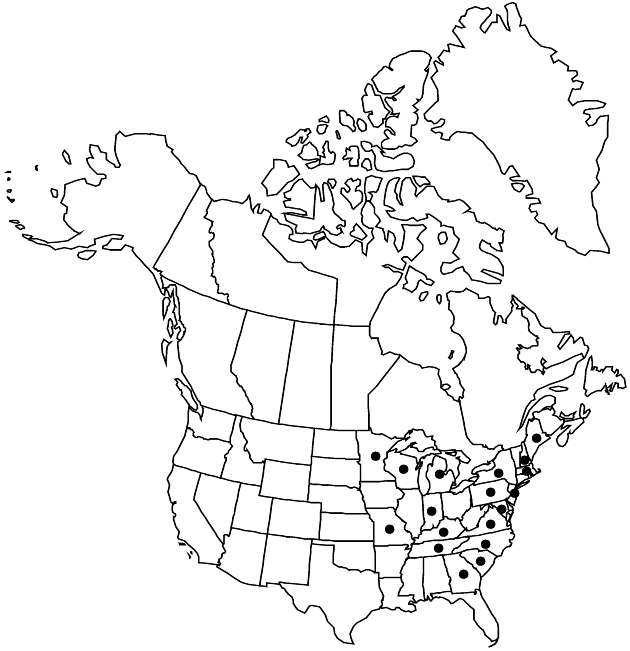Pseudognaphalium micradenium
Sida 19: 618. 2001.
Annuals (fragrant), 15–60 cm; taprooted or fibrous-rooted. Stems glandular-puberulent (without persistent tomentum), stipitate glands 0.1–0.2 mm, stalks narrower than gland widths. Leaf blades linear to linear-lanceolate or linear-oblanceolate, 1.5–5.5 cm × 1.5–10 mm, bases not clasping, not decurrent, margins flat, faces bicolor, abaxial white to gray, tomentose, adaxial green, both minutely stipitate-glandular. Heads in corymbiform arrays. Involucres turbinate-campanulate, 5–6 mm. Phyllaries in 4–6 series, white to tawny white (hyaline, shiny), narrowly ovate to oblong, glabrous. Pistillate florets 47–78. Bisexual florets (7–)11–20. Cypselae ridged, smooth.
Phenology: Flowering Sep–Oct.
Habitat: Dry woods and openings, roadsides
Elevation: 10–600 m
Distribution

Ga., Ind., Ky., Maine, Md., Mass., Mich., Minn., Mo., N.H., N.J., N.Y., N.C., Pa., S.C., Tenn., Va., Wis.
Discussion
Pseudognaphalium micradenium has a more northern and Appalachian distribution than P. helleri. A report of P. micradenium for Louisiana probably was based on specimens of P. helleri. The two species differ in vestiture and other features; stems of P. micradenium are more slender than those of its close relatives.
Selected References
None.